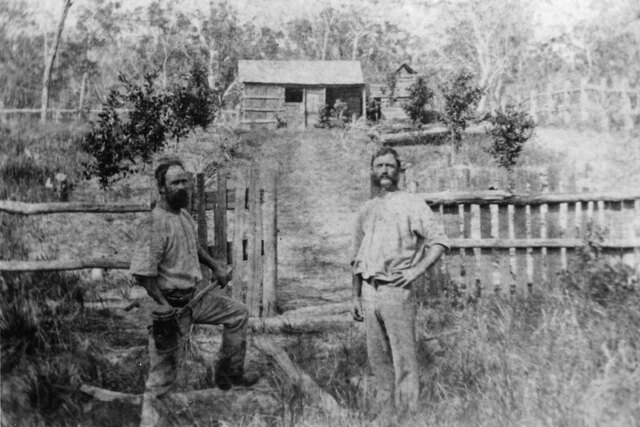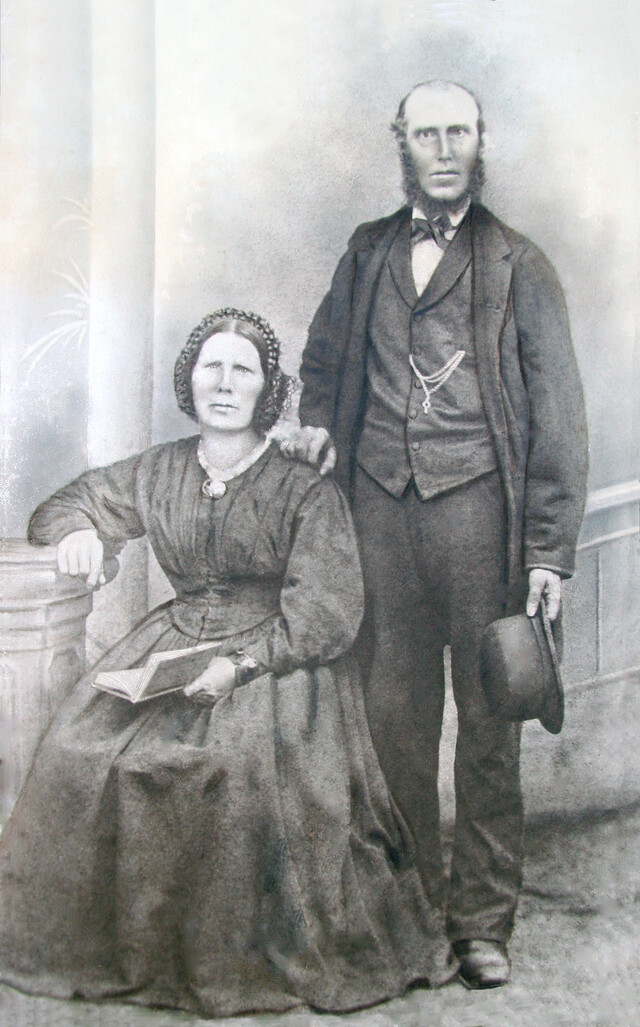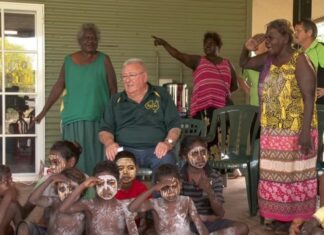When teacher Ian Stehbens was transferred to Holland Park in Brisbane in 1972, he met John Stehbens and his brother Ian Stehbens, a builder, for the first time.
“How are we related?” was an obvious question that they asked. “Wouldn’t have a clue!” was the answer. Little did Ian realise then the impact this question would have.
It started a journey of many hours of transcribing records at the State Archives, rescuing delicate volumes of records from dust and decay at the Bundaberg cemetery and travelling across the world to find his origins.
A major book, websites, reunions and recognition of forgotten history and forgotten people have resulted so far.
Now, Bundaberg is keen to recognise its pioneer heritage, including that created and contributed by an immigrant family from Schleswig-Holstein (Denmark-Germany), the family of Detlef and Anna Stehbens and their many descendants.
They arrived in Maryborough in 1865, and on the Burnett in 1871, the first of the German- speakers to select land for agriculture at Bundaberg. As Ian organises the finishing touches for a family reunion of the Stehbens clan to be held in Bundaberg on the weekend of 19-20 October, he humbly admits he would be happy with a dozen family members making the trek to the Wide Bay Burnett city for the occasion.
In reality, after drawing hundreds to earlier reunions in 2005 and 2015, he can expect at least a large turn-out.
What drives a man to such commitments and lengths? Discovering the family story and writing the chapters of this extended family history meant that melodramas of love and sadness were woven into a socio-political fabric that runs over four centuries and bears fruit in modern Bundaberg.
“It tells me why I am here,” Ian said.
“One of our family members told me that she hated her name – Stehbens – as she was growing up.
“She said no-one could spell it, no-one could pronounce it, it was a source of sadness.
“But when she read the published family history, From the edge of oblivion, everything changed. “She is so proud to understand where she fits in this fabulous story,” he said.
The welcoming embrace of this German family and their impact on Australian history began when the Stehbens family selected their first lands in Bundaberg – and when their children married other immigrants from Europe: Andresen, Elvery, Lister, Strand, Jules, Cherry, Melville.
The family has been omitted from much of Bundaberg’s social history because they were mistakenly assumed to be English. As records were made of births, deaths, marriages, and
school enrolments, the family names including Stehbens and Andresen were anglicised into Stevens and Andersons.
Bundaberg Regional Council now has a heritage committee which is keen to identify and recognise significant heritage, and they have been working with Ian to set the record straight.
“To date I have found 139 descendants of this family in Bundaberg cemeteries,” Ian said.
Patriarch of the family, Detlef (meaning “heritage of his people”) was buried on 20 October 1892 but no headstone was ever erected. A grandson, John Jules (1877-1906), who was tragically killed when the boiler at Bonna Sugarmill exploded, is buried with Detlef.
During the reunion weekend a memorial will be erected and unveiled at Bundaberg General Cemetery in Takalvan Street. It will also recognise Detlef’s wife Anna Wilhelmine (Grube) Stehbens, whose brick memorial on her grave in Maryborough was removed when the cemetery was turned into the Rose Garden.
“While this family was the first of the German speaking selectors to take up land at Bundaberg, its significance is even greater,” Ian said.
“Detlef and John discovered the groundwater of the Lower Burnett, digging an 18-metre deep well which Detlef lined with bricks made on his property. The site of their first home and well is preserved in Stehbens Park, Kepnock. John was entrepreneurial, delivering water from the well to homes in Bundaberg, growing corn for their horses and the Queensland market, and selling tobacco on the London market.”
“Their early contribution to economy and agriculture has flowed continuously to the present day.”
The memorial will also name all 13 of the original family and their marriage partners – the branches of the Andresen, Elvery, Lister, Jules, Strand and Stevens families. It is intended to be more than a family memorial but one of heritage significance to Bundaberg Region.
Bundaberg Regional Heritage Group, Bundaberg Regional Council and Generation Funerals are supporting this initiative.
As well as being an opportunity to create and renew family ties, the program includes field trips to significant sites with historical storytelling, a family dinner, photo displays and the opportunity to update the family genealogical database.
“They are not here, but they live on in their many descendants. So it is our privilege to honour our pioneers and tell their story,” Ian said.
He can be contacted on 0477 160578 for details of the reunion.









